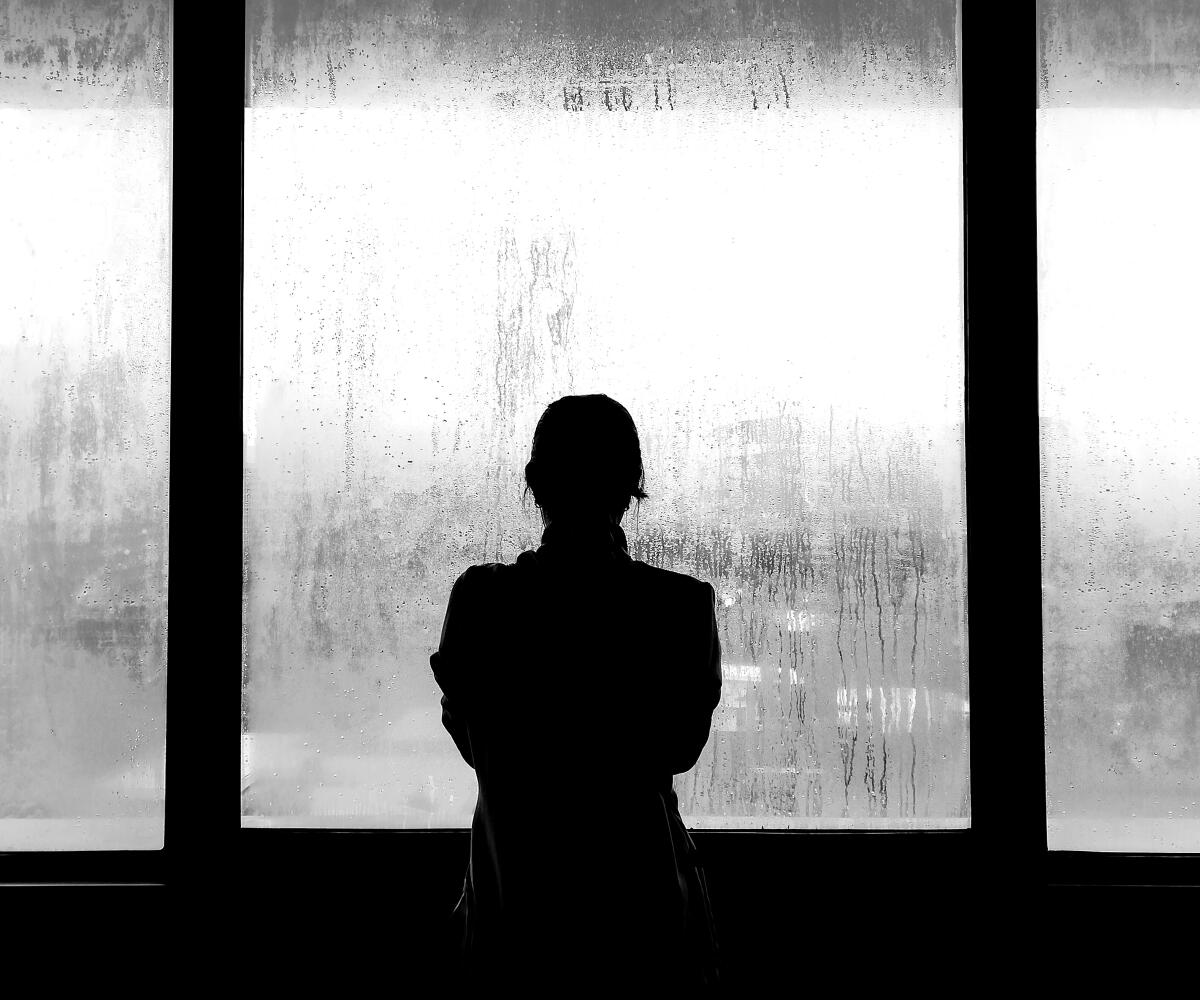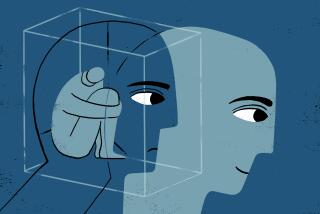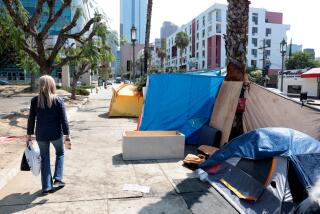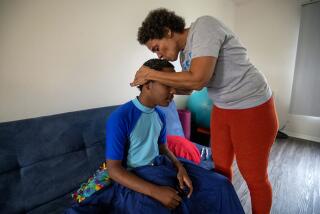Op-Ed: My daughter fell off the mental health care cliff, and I have to jump after her

- Share via
Our mental health system has failed my daughter. Again. Actually, that’s not true. There is no system, no real help for her.
My 20-year-old daughter tried to kill herself three weeks ago. She took a lot of pills all at once and, afraid that wouldn’t do the trick, drove toward the American River to drown herself. Her boyfriend happened to drive past her car and waved her down. That serendipity is the only reason she’s alive today.
My family isn’t alone in being affected by the failures of a non-system. Of our rising mental health problems — suicides, homelessness — doctors use the word “tsunami.” On average, says the National Alliance on Mental Illness, one person dies by suicide in the U.S. every 11 minutes.
This latest horror with my daughter isn’t a surprise. There were years of red flags. As a toddler, she stiffened if you hugged her, could focus for hours on something like a handful of rocks. She was clearly wired differently, but at first her eccentricities seemed harmless, even charming.
She started cutting around the same time she started to grow breasts. Our search for help began. Her insurance-covered crisis counselor explained that she had sensory sensitivities and anxiety coupled with mild autism that left her unable to process emotions the way others might.
The cutting worsened. Crippling anxiety and panic attacks that lasted a day or two became the norm. We did what we could with what our healthcare provider offered, but she was stuck in a horrible middle: Not OK enough to be helped much by once-a-week therapy, not an addict fit for rehab. I called every helpline and hotline. Weeks and months and years went by, as we begged for appointments and assessments, and searched for programs that fit.
In her late teenage years, she spoke often of suicide, not because she was depressed, but because she felt like a burden to us. When she was good she was great and really not when she wasn’t. She needed holistic care — individualized, intensive therapy; life skills development; constantly calibrated meds to subdue what was not yet unmanageable. But the programs were bursting at the seams, available mostly to the farthest-gone.
In early November 2020, a few days after she turned 20, my daughter locked herself in her room and stopped eating. She destroyed her possessions and wiped her laptop. Didn’t want to leave a trace, she told me later.
We got her admitted into an intensive outpatient program. For one month, her days were filled with group and individual therapy sessions. It helped, and when it ended we were told she would be connected with a therapist, a psychiatrist to oversee her meds, and a group therapy program that would teach her coping skills for her inevitable dips.
We spent weeks pestering our healthcare provider about getting her assigned to doctors and a group. She had her first follow-up therapy session at the end of month two. We’re still waiting for the group therapy to begin.
By mid-April, her meds needed to be refilled. I know, because I was giving them to her. But since she is legally an adult, only she could get the prescriptions renewed. The bottles ran empty.
The impact was almost immediate. She went from manic to depressive and back again. She took off, started living in her car. Kept a roll of disinfectant wipes in her glove compartment for bathing. Obtained blackout curtains to wedge into her windows.
She eventually refilled her prescriptions, and then she emptied the bottles.
When I got to the ER, I couldn’t get past the guard; they would not release any information. I left not knowing if my daughter was still alive.
The next day, my phone rang. But the woman just wanted to fill in my daughter’s contact information; she didn’t know where or how my daughter was. She did, however, know there was an $8,000 copay, and would I like to pay for that over the phone?
That evening a doctor from the ICU called. My daughter was in a coma and on life support. I could see her.
Three days later, she wiggled her toes. She was seizing, and her fever was 104. High, but not brain-damage high. When she could, she asked everyone, nurses, doctors, me, her boyfriend: Why am I here? What happened?
We told her, again and again. She remembered nothing. Not sleeping in her car, not taking pills. Why did I do it? she asked. No one knew how to answer that one.
When she was medically stable, the doctors moved her to a regular hospital room, waiting for an opening at our provider’s inpatient psych facility. That care would last one week, we were told, two tops. When I asked what we should do then, the doctor shrugged.
I am writing this while I search for whatever comes next. My daughter is not an addict or an alcoholic or a criminal. She isn’t homeless now, but if she comes home, I am sure she will land back on the streets, and the cycle will begin again. Why do we make it so hard to find a place for those who are mid-fall, who need more than once a week with a therapist, less than an intervention on the street? Why do we wait for them to hit rock bottom?
The provider still wants its money, and I must also find a way to pay for help beyond what the provider provides — if, when, I can locate that help. My daughter tumbled off a cliff, and I have to jump after her. We’re still falling, calling for help. So far, no one is answering.
Jasmin Iolani Hakes is a novelist based in California.
More to Read
A cure for the common opinion
Get thought-provoking perspectives with our weekly newsletter.
You may occasionally receive promotional content from the Los Angeles Times.










